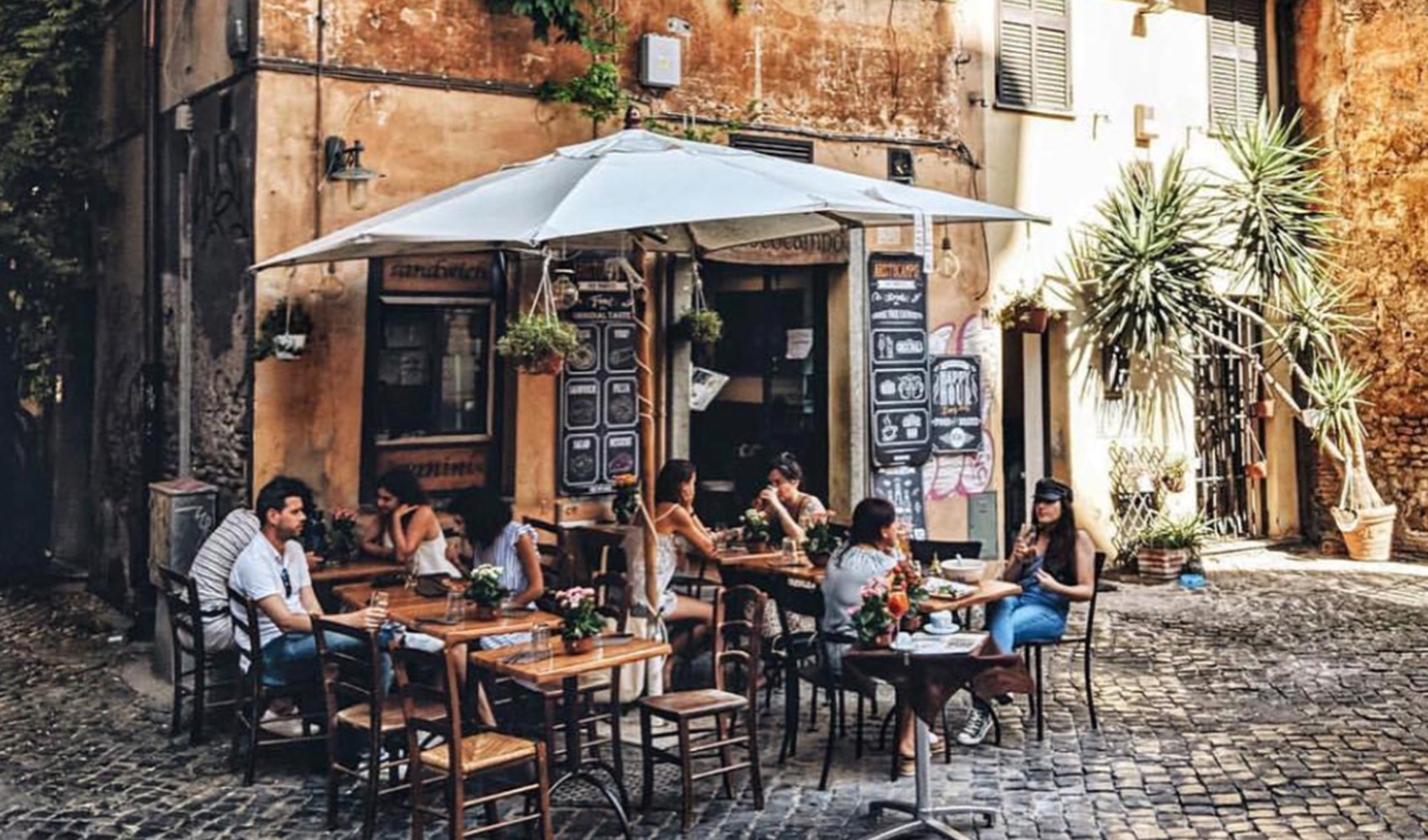Beauty...

By Ashley Gasparian
If we’re being honest, we miss traveling. And we really miss traveling to Italy. And we especially miss traveling to Rome and that one little trattoria in Trastevere that has the rickety tables on the cobblestones and no menus and only seems to serve locals. It’s the kind of place where no one speaks English, the house wine is perfection, and even though you never actually order food, the waiter delivers the world’s most inviting and delicious bowl of homemade cacio e pepe because he just knows.
Then it occurred to us: Coronavirus may keep us from Italy, but it can’t keep us from Rome. Here’s how to bring the Eternal City to your backyard, if only for tonight.
Head to the most authentic Italian store you can find. Eataly is always a great option. If you’re in New York, try Caputo’s in Carroll Gardens. (It’s tiny, old-school store, and even more authentic than Eataly.) Or call your favorite Italian restaurant and ask them if there’s a good Italian market nearby.
And now, for cocktails. Most local wine shops will have a good selection of Italian reds, but if not, keep looking until you find one. The wine makes the meal. For our money, we like a nice bottle of (preferably biodynamic) Brunello di Montalcino. If not, a Rosso di Montalcino. And while you’re there, pick up a bottle of Il Contratto red vermouth, a bottle of Campari, and a a bottle of prosecco. More on that in a minute.
To get in the mood, turn on “The Great Beauty.” It is by far the most beautiful and inspiring movie to come out of Italy in the past 50 years. We recommend watching this before you start dinner—but do whatever suits your mood. It is La Dolce Vita, after all.
Set the scene. In our unofficial estimation, Italians love their houses dark and their restaurants bright. But we vote for a dinner as moody and romantic as possible. This is the time to pull out tea lights and/or bistro lights and drape them around your balcony, backyard, even in your dining room. If you really want to feel authentically Roman, find an uneven patch of ground in your backyard and place a table and folding chairs to approximate a true trattoria. There’s nothing fussy about cucina Romana—and that’s exactly the point. Add a couple stemless wine glasses, a handful of wildflowers in a Mason jar, and you’ve got your own trattoria.
Time to get dressed. When in Rome… lean into the cliché of it all. Maybe a billowy dress with wide shoulder straps and a gingham print. Or black cigarette pants and a little sweater. Big earrings and some clangy jewelry. If it’s still light out, an oversized pair of sunglasses. Low-heeled raffia sandals, swipe of great lipstick, and you’re basically Sophia Loren.
For music, Andrea Bocelli, of course.
Aperitivi time. Our favorite cocktail for this moment is a negroni spagliato, or “mistaken negroni.” (Accoring to legend, a bartender in Venice was making a negroni, grabbed the prosecco instead of the gin and so was born the negroni spagliato.) .To make it, mix equal parts of Campari and vermouth, pour over ice and top it off with prosecco. (A lesson learned the hard way: Never shake the drink with the prosecco in it or it will go flat instantly.)
A truly authentic Roman cocktail hour includes three small bowls: one for Castelvetrano olives, one for peanuts, and a last one for classic Lay’s potato chips. Keep in mind the Romans keep aperitivi simple since dinner is the star of the show.
Mangia, mangia. A traditional Roman dinner consists of a primi ( the pasta course), a secondi (the meat or fish course), and an insalata at the end. We like to skip the protein and focus on the pasta. Tonight’s menu: authentically Roman cacio e pepe and an insalata verde. When you’re making the cacio e pepe, make it with bucatini pasta and—this is the big difference—save some of the pasta water for the sauce. This will ensure that the cheese won’t clump to the spoon. For your salad, Italians keep it very simple: mixed greens, extravirgin olive oil, vinegar, salt, and fresh ground black pepper.
Here are two good recipes to inspire you:
Finally, it wouldn’t be a Roman evening without a scoop of gelato, and an espresso if you have to do the dishes, or grappa if you don’t.